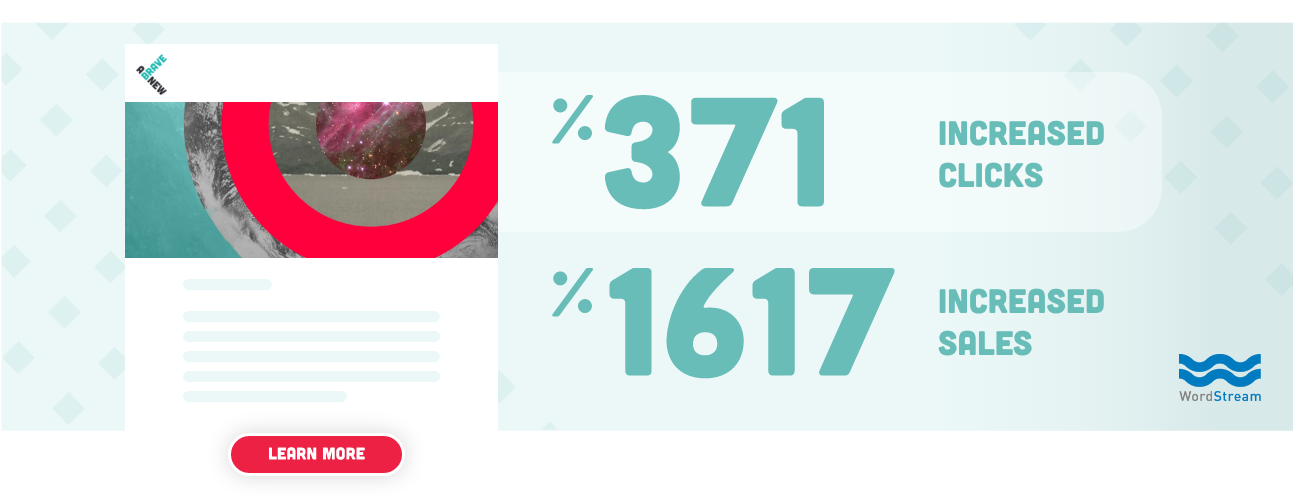Great content has long been hailed as the best way to achieve your sales and marketing goals. But despite its proven track record, some are wondering what content is still relevant in 2022.
It’s a never-ending conundrum. With the emergence of new channels and new models, marketers question everything. What content is best to support a growing program? Where can you get the most return for the least effort? Do I really need an in-house video team?
Content is still relevant in 2022, but like anything in marketing, it’s always evolving and its overall purpose isn’t. Today, just like a decade ago, any great content must provide deep value to the reader. But make no mistake, the what, when, and how of great content continues to evolve at a lightning pace.
Here are 10 ways that your content strategy and creation need to adapt in order to bring you the best results in 2022.

Focus on Your Audience
In the busy-ness of a robust and well-oiled marketing program, sometimes we lose the forest for the trees. You’re so busy doing SEO, creating a strong editorial plan, and producing content on time, that you may lose sight of who it’s for. And you don’t have to slip that far. If your gaze shifts just a few degrees, you’ll end up far away from your goal if you continue on autopilot for 3 or 6 months before noticing.
You must understand who you’re speaking to, and for what purpose, all the time. Each piece of content you produce should bring your customer or prospect further along their customer journey, answering questions, and providing value at the right time.
You need to know where they consume their content. Do they read long-form blogs or are they on LinkedIn? Do they prefer an in-depth whitepaper or a video?
What problems are they facing? What challenges are they trying to solve?
If you don’t know enough about your audience, do more research, regularly. It’s the only way you’ll be able to craft a program that aligns with people’s needs and brings them to the best solution to their problems—yours.
“Advertising people who ignore research are as dangerous as generals who ignore decodes of enemy signals.” – David Ogilvy (still true 50 years later)

Personalization
You don’t need me to tell you that the content landscape is more cluttered than ever. We’re consuming more content with more fractured attention, and we’re struggling to find the information we need more than ever before.
Personalization has been a marketing hot-topic for the past few years. And with the right data, you can personalize so much. It’s not just the greeting on your email, it can be a personalized landing page, website experience, or content written 1:1 just for one prospect, in one industry, facing one particular challenge.
Back in 2019, McKinsey made the bold prediction that “personalization will be the prime driver of marketing success within five years.”
If it sounds like a lot of work, think about it this way. You don’t want to personalize content for a mass marketing program. It’s too hard, and it’s not authentic. But if you take an account-centric approach, you can research target accounts and make great content for individual prospects, building trust and relationships along the way.
Does this mean personas are dead? Perhaps.
Each person is unique and it’s harder than ever to create content for a generalized group. Even Netflix thinks about their customers as an audience of 1 (which is a little easier when you have their treasure trove of data).
Think about how to research or collect your own valuable first-party data, and then look for ways to personalize your message, your offers, and your outreach to meet your prospects where they’re at.
Ungate Your Content
Step back and really think about your program goals. If you’re selling a high-value, long sales cycle B2B product or service, volume isn’t your goal. It may feel good and achievable to report on, but it’s time to change your thinking.
How many of your prospects or leads are making it through to becoming a customer? How many current customers are spending time reading your valuable content and upgrading their spend or feeling proud they’re your customer and sharing with their peers?
Think about who is coming to your website and for what purpose. If your buyer is the CMO or COO, are they likely to give you their email, wait for your email, and read the pdf? Do you think a traditional funnel approach is the best way to go? Or do you want to get your valuable thought leadership into the hands of the people who will buy with the most frictionless process?
You should also be focused on giving away what you know. I wrote a blog post about this a few months back: Why your secret sauce shouldn’t be so secret. In it I shared that many marketers hesitate to share their secret sauce because they believe it will give away their competitive advantage. This isn’t necessarily the case. Take a deeper look at how to share your secret sauce in a way that boosts your credibility and builds your differentiation in the marketplace. And then, make sure that buyers can access it easily. Trust me, once they trust you and believe you’re the right solution, they’ll get in touch.
Apply A Direct Response Mindset
Have you evaluated your content from a conversion standpoint lately?
Most B2B content we see is still very informational or educational. Which is fine … sometimes. But, you’re still producing content that should at some point get somebody to take action. And you need to be more clear about the next steps.
Because attention is so fragmented, you need to be very clear about what you want people to do, and give them a clear path forward. Take their cluttered, decision-weary minds and make something easy for them.
Think of these direct response principles as you’re evaluating whether your content is converting at the right times and places
- Data driven decisions—Look at what the numbers say, not what you think should be performing best, or what you think the best content is.
- Build off of one thing—Don’t recreate the wheel, take your best performing content and rework and republish it until performance slips.
- Ask for only one thing—Make it easy to figure out what to do. It’s tempting to slip several offers into an email, for instance, but with more choices, comes less action. Keep it simple and straightforward.
- Ask again and again—People are distracted and busy. Make sure you repeat your ask, because it may not have been seen the first time (or second, or third).
- Embrace our shared humanity—Put yourself in your audience’s shoes. How many emails do you get a day? How busy is your work day? How do you use social media? Think about what breaks through the clutter and why all the steps above are needed. And then, think empathetically about your audience and all the challenges facing them each day as you try to connect.
“Emails with a single CTA increased clicks by 371% and sales by 1,617%” (Wordstream)
If you feel you’re lacking in this area, or you’re uncomfortable being direct with your asks, you might want to read our practical guide: Why Effective Marketers Must Embrace Direct Response Principles

Content Variety
Depending on your goals and your audience’s needs, you need to think about whether you’re producing the best content, in the right places, to achieve your goals. Are you covering enough channels, and are you covering them well?
Here is a short list of how we believe you should be thinking about your content in these core delivery channels.
- Website—Please, we beg you, don’t neglect your website content. This is a place we see clients focus on the absolute least. Yes, you probably are creating new landing pages, but what about the core content on your site? Make sure you have a plan to keep that updated, and even try to build out sections where it makes sense to provide a personalized or versioned experience.
- Blog—Depending on your content needs, high-quality, long-form blog posts are still a very effective way to build credibility. If you are more focused on account-centric content, don’t worry! Adapting that content and posting on your blog for public consumption is a great way to repurpose your hard work.
- Podcast—This is a medium that has grown significantly over the past few years, and there is likely a far smaller barrier to entry than you might think. If you have a niche product or service, or you serve a unique industry, a podcast invitation can be an especially incredible new business opportunity where you have the chance to extend an easy ask and get to know your prospect better.
- Webinars—These can still be a very valuable experience for prospects to learn more about your business and also see what you’re all about. These should be much shorter than the 30-60 minute traditional offering and be offered on-demand. You can also pre-record and run with new Q&A depending on the topic.
- Social media—You also need to think strategically about the content you’re putting on social media. Depending on your social following, this is a great way to get very inexpensive organic traffic, with the right approach and targeting. Don’t just copy and paste your blog titles and expect this channel to work for you as well as it can with some additional effort.
- Video—We know the stats. People love consuming video content. Think through your sales strategy, and think about where video makes the best sense. Do you need an animated explainer video? A product demo or clinic tour? Can you record short videos with FAQs to give people a sense of your personality and approach?
- Long-form—Whitepapers or Ebooks are still effective, particularly if you have a high-value, complicated product to sell. Consider creating these as ungated webpages with an option to download a pdf version to keep. Also make sure that these are varied and have interactive components to hold attention and bring people through the content.
- Email—Don’t neglect email. And send more often than you think. If you’re only sending a monthly newsletter, at least consider a re-send to non opens or another email mid month. You really are out of sight, out of mind to your busy prospects, and you need to stay connected. Make sure you’re also providing some fresh content or insight and not just rolling up your blog posts for the month.
Quality Over Quantity
Even though we just listed an absolute ton of options in the point above, you need to be very pragmatic about what you can do well. What is your team’s capacity to create content that is extremely valuable and high quality? You can’t do it all.
Make sure that you know what the lead drivers are for your organization. What converts the most people into a conversation or leads them to sign up for a demo?
Be ruthless with yourself. If you’re feeling like your marketing program is behind where you think it should be, choose one or two things to do extremely well before you add anything to your plate.
If you stopped one of the things you’re doing and no one would miss it, that also tells you a lot. Focus on what you can do well, dial in, and make it work for you. Don’t try to do too much or you won’t end up with the results you need.
Jonathan Golden writes in the Harvard Business Review that, in his time at Airbnb, it took a constellation of metrics to capture what the business needed to scale and how each team could facilitate that success: quantity, quality, and efficiency.
Using Artificial Intelligence (AI)
As the people over at MAICON have been telling us for a while, the age of marketing AI is here.
We’re getting more and more familiar with AI, and at the very least, you’re battling or fearing the Google algorithm more and more each month.
There are a lot of great tools out there that will save you time and money. A good rule of thumb is to first try to use AI tools to automate repeatable and consistent tasks.
AI platforms, just like any software, can quickly become a massive expense without driving a significant return. So, before you start buying, it’s essential to sit down and identify the tasks that are data-driven, repeatable, and focused on making predictions in your marketing program.
You can even use some great new tools like Hyperwrite AI to write rough drafts of your content for you, like I did on this blog post!
If you want to learn about AI and its applications for your business, purchase an annual membership to the Marketing Artificial Intelligence Academy to gain access to hours of video learning content.
Content Strategy
Taking all of the above into account, I don’t think we need to work too hard to convince you that you still need a great content strategy to hold everything together and help you plan out your work.
Robert Rose of the Content Management Institute talks about the purpose of thinking about content in business. He says “by developing a strategy for content, you can equate content with communication. If your content is intended to communicate and deliver value to our audiences, then it is worth putting a plan around the creation of those things. That’s a content strategy.”
So, when you think about the makeup and work of your marketing team, you’ll need to make sure you don’t have people just producing content, you need people thinking about how (when, and who for) to produce the most effective, efficient business communication.
Measurement & Evaluation
Measuring the effectiveness of your content these days feels like 3 dimensional chess. Which just sounds really hard.
But you really need this data to make good decisions about your program.
I encourage you to think beyond the traditional marketing funnel this year. If you’re still measuring things in this traditional way, you’re likely struggling to defend your marketing spend. A famous Forrester data point from a few years back says that fewer than one percent of all leads turn into customers.
Think about what you’re trying to achieve. Consider an account based marketing (ABM) approach (see point 10, below) and rework your measurement accordingly.
Your goal should be a scorecard that is shared with sales, accurately reflects what your program does really well, and indicates where the budget should be allocated.
Resist the urge to stuff your scorecard with vanity metrics and be brutally honest about what’s working to bring prospects closer to a sale. After all, that’s our real goal. Not website traffic.
Account-Centric Approach
We’ve touched on it above, but all the changes in the marketplace—lack of first party data, less access to third party data, cluttered digital marketplaces, hard-to-reach and distracted audiences—point to one real solution for B2B marketers: ABM.
Loosely, ABM is a philosophy of focusing on the most promising accounts, rather than spreading your efforts across a wide background of potential leads. And ABM is the future of B2B marketing, because this pivot efficiently produces the best results.
In the book, ABM Is B2B: Why B2B Marketing and Sales Is Broken and How to Fix It, the authors argue that “ABM is transformative—the kind of change we haven’t experienced in more than a decade—because it’s about much more than the strategies and tactics within it. ABM is B2B. There’s no separating the two.”
An account-based approach can’t be fully adopted overnight, but if you’re behind the curve, you’ll want to think about how you can start moving that way as soon as you can.
Even with a successful pilot, you’re likely going to be in hybrid land for a while. Which is why all of the above points are important and can be applied across your program in different ways. If you’re not heavily into piloting ABM for your organization, it’s going to take some time to turn the ship and impossible for your team to do without the smart, specific resources that your team will produce.
So now what?
Content is still queen. Or rather, relevant content is still queen. Despite the emergence of new marketing technologies and channels over the years, the biggest returns continue to come from a foundation of well-crafted, compelling content. The best companies are still investing heavily in content, and are finding ways to make their content even more relevant and tailored to individual customers, which is producing even better results.
Download The Beginners Guide to Generating Inbound Leads now!
Don’t miss out, get Brave News now
Join the ABN community and be the first to learn about trends in inbound marketing, branding, and web design.






